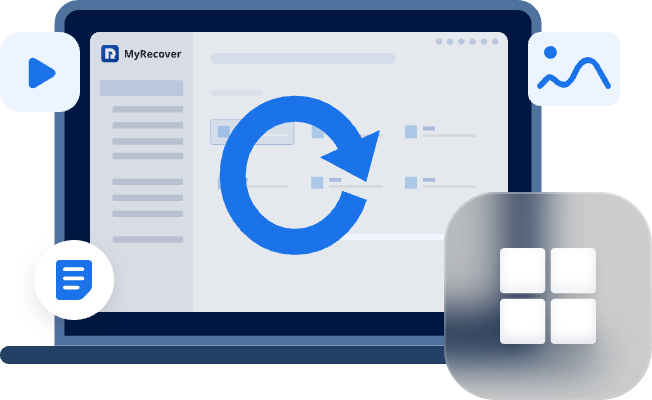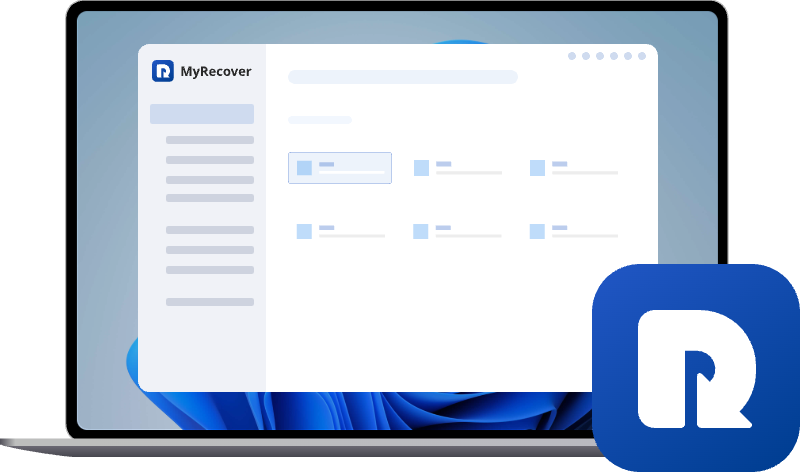The Volume Does Not Contain a Recognized File System Fix: Step-by-Step Guide
Encountering the “the volume does not contain a recognized file system” message when you try to access your drive? That usually means your USB drive or external disk is corrupted or unreadable. This article walks you through the most common causes and effective fixes. Whether you're facing the error on a USB stick or external drive, you'll find simple, actionable steps to recover your data and restore the file system.
What "The Volume Does Not Contain a Recognized File System" Error Means?
For some reason I am getting "the volume does not contain a recognized file system" when trying to access my SanDisk USB flash drive. I was able to access this morning but a little later, I was not. Nothing transpired between the time I could access it and the time I could not. Why am I suddenly getting "the volume does not contain a recognized file system"? Anyone can tell and help solve it? Thanks a lot!
- Question from learn.microsoft.com
The error "The volume does not contain a recognized file system" typically appears in Windows when you try to access a drive (HDD, SSD, USB, or SD card), and the operating system cannot read the file system on that drive.
In simple terms, think of a storage drive (HDD, SSD, USB drive) as a large library and the File System (like NTFS, FAT32, exFAT) is the library's catalog system. It tells the operating system where every "book" (file) is located on the shelves (the disk sectors).
When you get this error, it's as if Windows has walked into the library but found the catalog system is either missing, corrupted, or written in a language it doesn't understand. As a result, Windows cannot find or access any of your files, even though they might still physically be on the drive.
What Triggers "Unrecognized File System" Errors?
This critical error can be triggered by several underlying issues, ranging from logical software corruption to physical hardware damage. Understanding these causes is the first step toward an effective solution. The main culprits typically fall into the following three categories:
- Unexpected Removal: Safely removing a USB drive is crucial. Unplugging it while data is being written can corrupt its file system.
- Power Surges or Outages: A sudden loss of power during a read/write operation can damage the file system.
- Bad Sectors: Physical damage on a hard drive can develop over time, damaging the area where the file system data is stored.
Incorrect Formatting:
The drive might have been formatted using a file system that Windows does not natively support (e.g., APFS for Mac, EXT4 for Linux, or a proprietary format).
Physical Damage or Connection Issues:
A failing hard drive or a loose/faulty USB cable/port can prevent the system from correctly reading the file system data.
Partition Table Damage:
The partition table, which acts as a "map" of the drive's partitions, can become corrupted, making the partitions within it appear unrecognizable.
How to Fix "The Volume Does Not Contain a Recognized File System" Error?
When confronted with this file system error, it's important to approach the situation methodically. The following methods are arranged from least invasive to most invasive, giving you the best chance to recover your data before attempting solutions that might erase it.
Recover Data First (Optional yet Recommended)
Before proceeding, if your data is critical, consider using a professional data recovery tool like MyRecover. It is able to recover data from corrupted or damaged drive, emptied Recycle Bin, power failure, system crash, or even deleted / lost partition.

- 🌟No Backup Needed: Recovers files directly from your drives.
- 🌟3-Step Process: Simply Scan, Preview, and Recover
- 🌟Work with 500+ devices: HDD, SSD, USB drives, and memory cards.
- 🌟Cover 500+ Data Loss Cases: Deletion, format, system crash, virus attack, etc.
- 🌟Support 1000+ File Formats: Texts, pictures, videos, audios, emails, compressed files, etc.
- 🌟Preview Functionality: Preview recoverable files and ensure accurate recovery.
- 🌟AI File Recognition & Scan: automatic AI technologies and algorithms.
Step 1. Install and launch the software. Select the target drive which reports the "the volume does not contain a recognized file system" error and click on "Scan".
- Note:✎...
- If the drive is missing on the MyRecover interface, try "Partition Lost Recovery" under the "Advanced Recovery" section, which can search for all lost partitions on the operating system and recover files then.
Step 2. After the scan, browse all recoverable files, or filter / search specific file (type). Check what you need and click on "Recover".
Step 3. Choose a different drive from the original one to save the recovered files.
After recovering files from the inaccessible drive successfully, you can follow the methods to fix the unrecognized file system error.
Method 1: Use CHKDSK to Repair the Corrupted File System
The CHKDSK (Check Disk) utility is a built-in Windows tool designed to fix file system errors and scan for bad sectors. It should be your first step if the drive is still partially accessible.
Step 1. Press "Win + S", type "cmd", right-click on "Command Prompt," and select "Run as administrator."
Step 2. In the command prompt window, type the following command, replacing X: with the actual letter of your corrupted drive:
chkdsk X: /f /r
- The /f parameter instructs CHKDSK to fix any errors it finds.
- The /r parameter locates bad sectors and attempts to recover readable information.
The process may take a considerable amount of time, depending on the drive's size and condition. If successful, this command can repair the logical file system structure and restore your access to the drive and its data.
- ★You may also find this helpful: CHKDSK is not available for RAW drive
Method 2: Assign a New Drive Letter in Disk Management
Sometimes, the file system is intact, but a drive letter conflict or corruption is preventing Windows from recognizing it properly. Thus, you can assign a different letter to the drive.
Step 1. Press "Win + X" and select "Disk Management."
Step 2. Locate your unrecognized drive in the bottom panel. It will show a healthy partition but may be missing a drive letter.
Step 3. Right-click on the primary partition of the drive and select "Change Drive Letter and Paths..."
Step 4. Click "Add..." or "Change..." and assign a new, unused drive letter (e.g., F:). Click "OK" to confirm.
Check if the drive is now accessible in File Explorer. This simple reassignment can often resolve the issue without data loss.
Method 3: Recover Lost Partitions to Rebuild Partition Table
When you encounter the "unrecognized file system" error due to a damaged partition table, the most effective solution is to recover the lost partitions. TestDisk provides a reliable way to rebuild your partition table by scanning and restoring missing partitions.
Step 1.Download TestDisk from the official website. Extract the compressed folder, find and Run "testdisk_win.exe" as Administrator.
Step 2. Select "Create" to start a new log file. Choose the problematic physical drive from the list.
Step 3. Select partition table type (usually "Intel" for MBR or "EFI GPT" for GPT disks). Press Enter to continue.
Step 4. Choose "Analyse" from the menu.
Step 5. Select "Quick Search" to scan for lost partitions.
Step 6. Press "P" to list files in the found partition. Verify your data is intact before proceeding.
Step 7. Select "Write" to save the recovered partition structure. Confirm with "Y" to execute.
Restart your computer to complete the recovery process. Check if your drive is accessible again.
Method 4: Format the Drive to a Compatible File System
If the "The volume does not contain a recognized file system" error still persists, formatting the drive becomes the definitive solution. This action directly addresses the core of the error by erasing the corrupted or unrecognized file system and establishing a new, clean one that Windows can immediately recognize and use.
⚠️Formatting will erase all data on the drive. Only use this method if the previous steps have failed and you have either recovered your data or accepted its loss.
Step 1. Open"Disk Management."Find your drive, right-click on its partition, and choose "Format."
Step 2 In the dialog box:
- For a drive used only with modern Windows systems, choose NTFS or FAT32.
- For a drive that needs compatibility with both Windows and Mac, or for large files, choose exFAT.
Step 3. Leave "Perform a quick format" checked and click "OK." After formatting, the drive should be recognized, but it will be empty.
Conclusion
Encountering the error “The volume does not contain a recognized file system” on USB or other storage device can be alarming, especially when important files suddenly become inaccessible. Fortunately, this article collects 4 effective fix for the unrecognized file system issue.
By starting with the least invasive methods, such as running CHKDSK or assigning a new drive letter, you maximize chances of restoring access without losing data. If the drive’s structure is damaged, TestDisk or MyRecover can effectively rebuild lost partitions or retrieve your files without backup. As a last resort, formatting the drive will eliminate the error entirely, ensuring the device is functional again.


